PLAISANCE FALLS AND PLAISANCE HERITAGE CENTRE
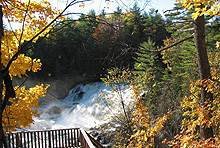 The Chutes de Plaisance, or Plaisance Falls, are located about five kilometres north of the village of Plaisance, along Route 148. An exceptional natural and historic site, for over a century, the falls were the site of a thriving mill town known as North Nation Mills.
The Chutes de Plaisance, or Plaisance Falls, are located about five kilometres north of the village of Plaisance, along Route 148. An exceptional natural and historic site, for over a century, the falls were the site of a thriving mill town known as North Nation Mills.

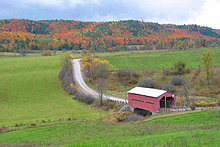 By the beginning of the 20th century, there were hundreds of covered bridges across Quebec. A century later, the province numbers just over ninety, some built as late as the 1950s. In the heyday of the covered bridge, most villages had at least one; some had several. They dotted the back roads as well, crossing brooks and rivers of all sizes. Very few, however, have survived the ravages of time.
By the beginning of the 20th century, there were hundreds of covered bridges across Quebec. A century later, the province numbers just over ninety, some built as late as the 1950s. In the heyday of the covered bridge, most villages had at least one; some had several. They dotted the back roads as well, crossing brooks and rivers of all sizes. Very few, however, have survived the ravages of time.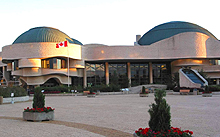 Located on level two of the splendid Canadian Museum of Civilization is a little gem known as the Canadian Children’s Museum. Opened in 1989, the Children’s Museum has grown over the years to nearly three times its original size.
Located on level two of the splendid Canadian Museum of Civilization is a little gem known as the Canadian Children’s Museum. Opened in 1989, the Children’s Museum has grown over the years to nearly three times its original size. Accessible from the tourist bureau (the former train station) on Route 148 in Montebello, the Papineau Memorial Chapel (516Notre-Dame Street) is a modest stone building in a wooded area not far from the Manoir Papineau National Historic Site of Canada.
Accessible from the tourist bureau (the former train station) on Route 148 in Montebello, the Papineau Memorial Chapel (516Notre-Dame Street) is a modest stone building in a wooded area not far from the Manoir Papineau National Historic Site of Canada.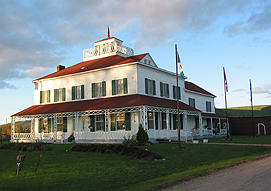 This is not a typical Outaouais farmhouse. For George Bryson (1813-1900), farming was a sideline.
This is not a typical Outaouais farmhouse. For George Bryson (1813-1900), farming was a sideline.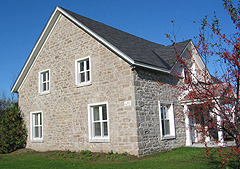 Built in 1827, the old Hull Township Methodist Chapel is believed to be Quebec’s oldest church building still standing west of Montreal.
Built in 1827, the old Hull Township Methodist Chapel is believed to be Quebec’s oldest church building still standing west of Montreal.
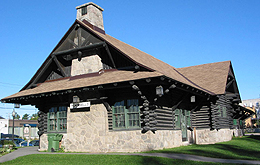 The old Montebello train station (502-A Notre-Dame Street) has been a landmark on Route 148 since 1931. Once crowded with passengers arriving by train from Montreal, Ottawa, the United States, and elsewhere -- people coming to stay at the famous Château Montebello -- the station is now home to the local tourist bureau.
The old Montebello train station (502-A Notre-Dame Street) has been a landmark on Route 148 since 1931. Once crowded with passengers arriving by train from Montreal, Ottawa, the United States, and elsewhere -- people coming to stay at the famous Château Montebello -- the station is now home to the local tourist bureau.